11 Herbal Teas For Oily Skin
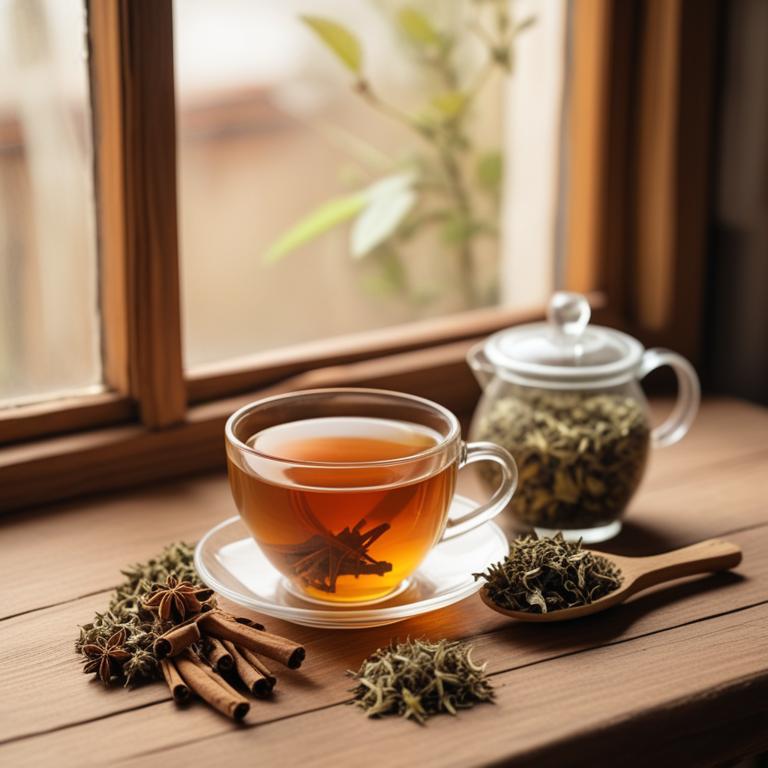
If you have oily skin, you might be looking for ways to keep it under control.
Herbal teas can be a great help. These teas work in a few ways to reduce oil production. They can help calm your body's stress response, which can trigger excess oil production. For example, Lavandula angustifolia, also known as lavender tea, has a soothing effect that can calm your mind and body. This can lead to a decrease in oil production. Another way herbal teas can help is by regulating your body's natural processes.
Zingiber officinale, or ginger tea, can help stimulate digestion and circulation, which can help remove toxins and excess oils from your skin. This can result in a clearer and more balanced complexion. Herbal teas can also have antibacterial properties that help keep your pores clean. Thymus vulgaris, or thyme tea, has antimicrobial properties that can help reduce acne and inflammation caused by excess oil. Drinking these teas regularly can bring several benefits to your life. Your skin may look and feel healthier, with fewer breakouts and a more even tone. You may also find that your skin is less prone to irritation and redness.
By incorporating herbal teas into your daily routine, you can take a natural and gentle approach to managing oily skin.
- 1. Lavandula angustifolia
- 2. Zingiber officinale
- 3. Thymus vulgaris
- 4. Aloe barbadensis
- 5. Echinacea purpurea
- 6. Rosmarinus officinalis
- 7. Ginkgo biloba
- 8. Melissa officinalis
- 9. Silybum marianum
- 10. Cymbopogon citratus
- 11. Cinchona officinalis
1. Lavandula angustifolia

Lavandula angustifolia teas contains the bioactive constituents linalool and linalyl acetate.
These compounds have anti-inflammatory and antiseptic properties, which can help reduce redness and prevent bacterial growth that can clog pores. The tea also contains apigenin, a flavonoid that can help regulate oil production in the skin. Apigenin has been shown to inhibit the production of sebum, a key contributor to oily skin.
By reducing sebum production and preventing bacterial growth, Lavandula angustifolia teas may help balance the skin's natural oil levels and reduce the appearance of oily skin.
- Gather 2 tablespoons of dried Lavandula angustifolia flowers and a cup of boiling water.
- Steep the dried flowers in the boiling water for 5-7 minutes.
- Strain the mixture using a fine-mesh sieve into a cup.
- Add 1 teaspoon of honey to the tea for taste and to help soothe oily skin.
- Drink the tea once a day, ideally before bedtime, to help balance oil production and promote skin health.
2. Zingiber officinale

Zingiber officinale teas contains a compound called gingerol, a bioactive constituent that has anti-inflammatory properties.
These properties help reduce redness and swelling, which can occur with oily skin. Gingerol also contains antioxidants like 6-gingerol, which neutralize free radicals that can damage skin cells and lead to acne. Additionally, zingiber officinale teas contain shogaol, a compound that inhibits the production of sebum, the oily substance that can clog pores and exacerbate oily skin.
By reducing sebum production and inflammation, zingiber officinale teas can help regulate skin's natural balance and improve its appearance.
- Gather 1 tsp of dried Zingiber officinale root and 1 cup of boiling water.
- Steep the Zingiber officinale root in the boiling water for 5-7 minutes.
- Strain the mixture into a cup using a fine-mesh sieve.
- Add 1 tsp of honey to the tea if desired for sweetness.
- Drink the tea 2-3 times a week to help reduce oily skin.
Zingiber Officinale Tea on Amazon
FGO Organic Ginger Tea, 100 Count, Eco-Conscious Tea Bags, Caffeine Free, Packaging May Vary (Pack of 1)
Disclaimer: We earn a commission if you click this link and make a purchase at no additional cost to you.
3. Thymus vulgaris
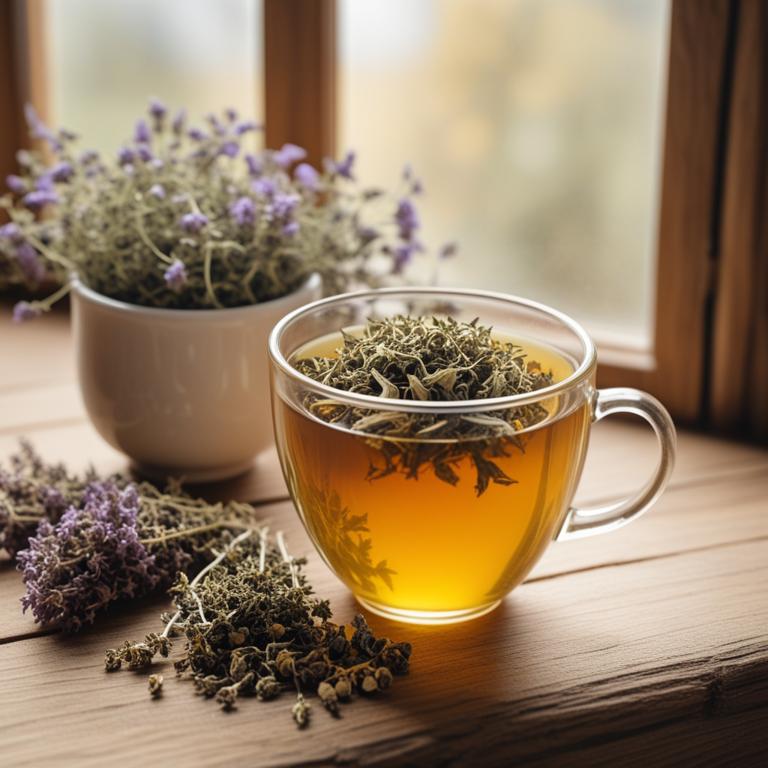
Thymus vulgaris teas contains thymol and carvacrol, two active constituents that help with oily skin.
Thymol has antiseptic and astringent properties, which reduce oil production and prevent bacterial growth. Carvacrol, on the other hand, has antimicrobial properties that help to control acne-causing bacteria. These properties help to balance the skin's natural oil production, reducing the appearance of oily skin.
By reducing oil production and preventing bacterial growth, Thymus vulgaris teas can help to keep oily skin under control.
- Gather 1 cup of boiling water and 1 tablespoon of dried Thymus vulgaris leaves.
- Measure 1 teaspoon of dried Thymus vulgaris leaves and place them in a tea infuser or a small muslin bag.
- Pour the boiling water over the Thymus vulgaris leaves in the tea infuser or muslin bag.
- Let the mixture steep for 5-7 minutes before straining it into a cup.
- Drink 1 cup of the Thymus vulgaris tea 2-3 times a week to help control oily skin.
4. Aloe barbadensis
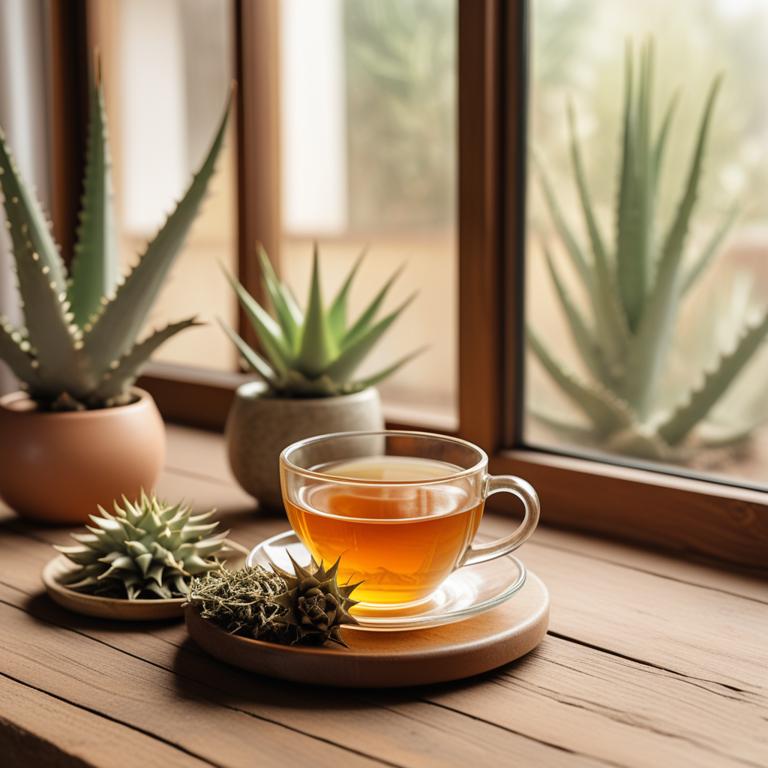
Aloe barbadensis teas contains bioactive constituents like aloin, aloe-emodin, and anthraquinones that help with oily skin.
These compounds have anti-inflammatory and astringent properties, which reduce redness and excess oil production. The astringent properties also help to tighten pores and reduce their size, making it less likely for oil to seep through. Additionally, aloin and aloe-emodin have antibacterial properties, which can help control the growth of bacteria that can contribute to oily skin.
By regulating oil production, reducing inflammation, and controlling bacteria growth, Aloe barbadensis teas can help to balance and calm oily skin.
- Gather 1 cup of Aloe barbadensis gel, 1 cup of water, and a teapot.
- Cut the Aloe barbadensis into small pieces and place them in the teapot.
- Pour 1 cup of water over the Aloe barbadensis and let it steep for 5-7 minutes.
- Strain the liquid through a cheesecloth or a fine-mesh sieve into a cup.
- Drink 1/2 cup of the Aloe barbadensis tea 2-3 times a week to help control oily skin.
5. Echinacea purpurea

Echinacea purpurea teas contains bioactive constituents like alkylamides, caffeic acid, and rosmarinic acid.
These compounds have anti-inflammatory properties, which help to reduce redness and swelling in oily skin. The rosmarinic acid in Echinacea purpurea tea has antioxidant properties that combat free radicals, which can contribute to skin damage and oil production. The caffeic acid also has astringent properties, which can help to tighten pores and reduce the appearance of oily skin.
By reducing inflammation and combating free radicals, Echinacea purpurea tea may help to balance the skin's natural oil production and promote a healthier complexion.
- Gather 2 tablespoons of dried Echinacea purpurea flowers.
- Boil 1 cup of water in a pot.
- Remove the pot from heat and add the Echinacea flowers.
- Steep the flowers for 5-7 minutes, then strain the tea.
- Drink 1 cup of the tea 2-3 times a day to help reduce oily skin.
6. Rosmarinus officinalis

Rosmarinus officinalis teas contains bioactive constituents like rosmarinic acid, carnosic acid, and ursolic acid.
These compounds have anti-inflammatory and antioxidant properties that help to reduce oil production in the skin. The rosmarinic acid in this tea can also help to unclog pores and prevent clogged pores from producing more oil. Additionally, the antioxidants in Rosmarinus officinalis teas can help to protect the skin from damage caused by free radicals, which can contribute to oily skin.
By reducing inflammation and protecting the skin, Rosmarinus officinalis teas can help to regulate oil production and balance the skin's natural moisture levels.
- Gather 1 cup of fresh Rosmarinus officinalis leaves or 1 teaspoon of dried leaves.
- Boil 1 cup of water in a pot.
- Add the Rosmarinus officinalis leaves to the boiling water.
- Steep for 5-7 minutes, then strain the leaves from the water.
- Drink 1 cup of the tea 2 times a day to help reduce oiliness in the skin.
7. Ginkgo biloba

Ginkgo biloba teas contains flavonoids and terpenoids, which are its bioactive constituents.
These compounds have anti-inflammatory properties that help reduce redness and swelling associated with oily skin. The flavonoids, particularly quercetin and kaempferol, have antioxidant properties that neutralize free radicals, which can contribute to skin damage and inflammation. The terpenoids, such as bilobalide, have a regulating effect on oil production in the skin, reducing the amount of sebum that is released.
By reducing inflammation and regulating oil production, Ginkgo biloba teas may help to improve the appearance of oily skin and reduce its symptoms.
- Gather 1 cup of water and 1 tablespoon of dried Ginkgo biloba leaves.
- Boil the water in a pot and let it cool for 1-2 minutes.
- Add the dried Ginkgo biloba leaves to the cooled water.
- Let the mixture steep for 5-7 minutes, then strain the tea.
- Drink 1 cup of the Ginkgo biloba tea twice a day to help reduce oily skin.
8. Melissa officinalis

Melissa officinalis teas contains rosmarinic acid, a powerful antioxidant, and luteolin, a flavonoid with anti-inflammatory properties.
These compounds help reduce inflammation and redness associated with oily skin. The tea also contains apigenin, a flavonoid that has been shown to inhibit the production of sebum, the oily substance produced by the skin. By regulating sebum production and reducing inflammation, Melissa officinalis teas can help balance the skin's natural moisture levels and reduce the appearance of oily skin.
Regular consumption of Melissa officinalis teas may lead to a clearer and more even-toned complexion.
- Gather 1 cup of dried Melissa officinalis leaves.
- Boil 1 cup of water in a pot.
- Add 2 tablespoons of dried Melissa officinalis leaves to the boiling water.
- Reduce heat and let it simmer for 5 minutes.
- Strain the tea and drink it hot or cold as needed.
9. Silybum marianum
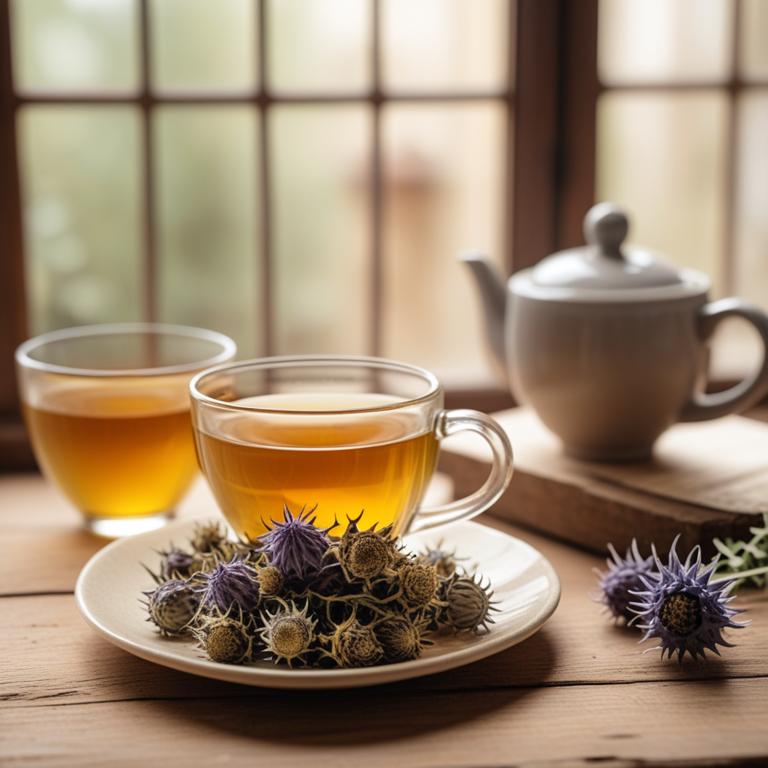
Silybum marianum teas contains silymarin, a powerful antioxidant that helps to balance oil production in the skin.
Silymarin works by reducing inflammation and preventing the overproduction of sebum, which is a major contributor to oily skin. Silybum marianum teas also contains flavonoids, which have a soothing effect on the skin and help to regulate its natural moisture balance. The anti-inflammatory properties of silymarin and flavonoids help to reduce redness and irritation associated with oily skin.
By regulating oil production and reducing inflammation, Silybum marianum teas can help to keep oily skin under control.
- Gather 1 cup of dried Silybum marianum flowers. You can buy them at a health food store or online.
- Measure 1 tablespoon of dried Silybum marianum flowers and place it in a tea infuser or a heat-resistant cup.
- Boil 1 cup of water and pour it over the dried flowers in the tea infuser or cup.
- Let the tea steep for 5-7 minutes, then strain the liquid into another cup using a fine-mesh sieve or cheesecloth.
- Drink 1/2 cup of the Silybum marianum tea 2-3 times a week to help reduce oily skin.
10. Cymbopogon citratus
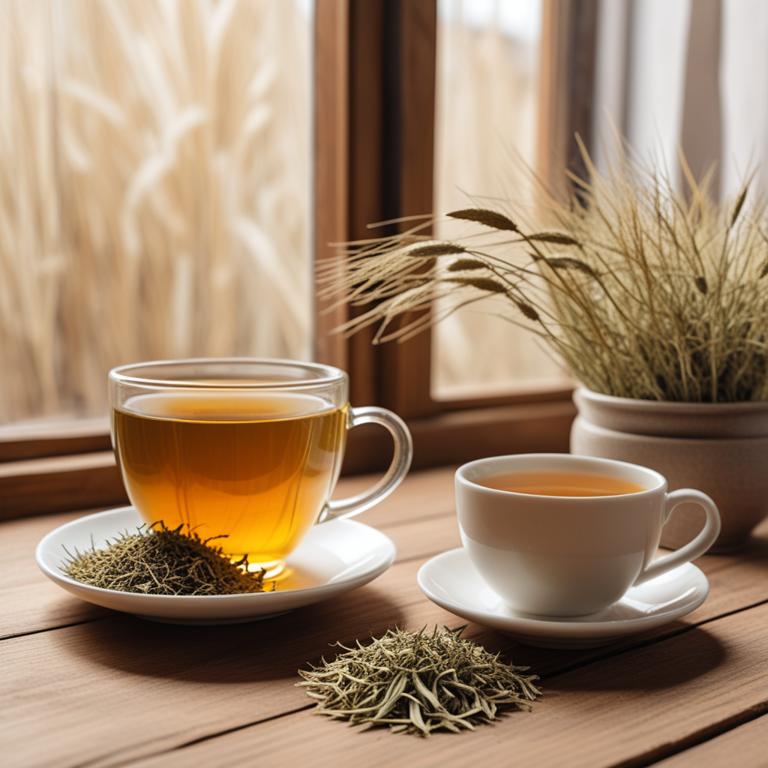
Cymbopogon citratus teas contains active constituents like limonene and beta-pinene, which have antiseptic and anti-inflammatory properties.
These properties help to reduce the production of sebum, the oily substance that clogs pores and causes oily skin. The tea's high antioxidant content, particularly from compounds like geraniol and linalool, helps to soothe and calm irritated skin, reducing redness and inflammation. The antiseptic properties also help to control the growth of bacteria that can contribute to oily skin, preventing breakouts and acne.
By reducing sebum production and controlling bacterial growth, Cymbopogon citratus teas can help to balance the skin's natural oil production and promote a healthier, more balanced complexion.
- Get 1 cup of fresh Cymbopogon citratus leaves. You can buy them at a local market or grow them in your garden.
- Add 2 tablespoons of Cymbopogon citratus leaves to a tea infuser or a heat-resistant cup.
- Pour 8 ounces of boiling water over the leaves. Let it steep for 5-7 minutes.
- Strain the tea and discard the leaves. Let it cool down to room temperature.
- Drink 1 cup of the tea 2-3 times a week to help control oily skin. Store any leftover tea in the refrigerator for up to 24 hours.
11. Cinchona officinalis

Cinchona officinalis teas contains the bioactive constituents quinine and cinchonine, which have anti-inflammatory and antiseptic properties.
These compounds help to reduce redness and inflammation associated with oily skin. Quinine also has a natural astringent effect, which can help to balance the skin's pH and reduce oil production. Additionally, the tea's antioxidant properties help to protect the skin from damage caused by free radicals, which can contribute to skin problems.
By reducing inflammation and balancing the skin's pH, Cinchona officinalis teas can help to improve the appearance of oily skin.
- Gather 1 cup of fresh Cinchona officinalis leaves or 2 teaspoons of dried leaves.
- Bring 1 cup of water to a boil in a pot.
- Add the Cinchona leaves to the boiling water and reduce heat.
- Steep for 5-7 minutes, then strain the leaves from the tea.
- Drink 1/2 cup of the tea 2-3 times a week to help balance oily skin.